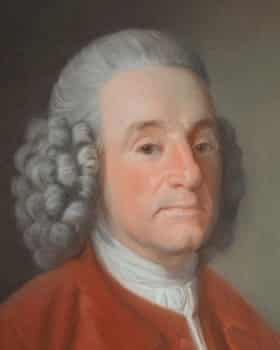[ad_1]
Catherine the Great, who ruled Russia for more than 30 years in the late 18th century, copied eccentric English childcare methods to try to alter Europe’s view of her empire as unsophisticated and feudal.
The harsh nursery regime favoured by the English royal family, including long walks for toddlers, cold water washing and no rocking of cribs, was adopted by the empress’s own palace in St Petersburg once she received a note outlining the rules followed by the royal nanny in London.
“The emphasis was on discipline and fresh air,” said Lucy Ward, the author of a new book that reveals startling practices in both royal households. “It is all hearty and no-frills stuff but, for Catherine, it was part of showing the world just how progressive Russia was.”
In a message to the empress, the nurse Louisa Chieveley, who tended George III’s 15 babies, claimed it was “their constant living, the regularity of which, with air and exercise, makes them the healthiest family in the world”.
As part of what Catherine described as her own “anglomania”, in 1768 she also secretly summoned a doctor from Hertfordshire to travel out to inoculate her and her young family against smallpox, a technique that was highly controversial. The charismatic despot, who is played by Elle Fanning in the hit Channel 4 drama The Great, reigned over her empire from 1762 to 1796, and was determined to impress European elites with her adherence to modern scientific advice.
“These ideas were part of her interest in education and health. Russia had a big child mortality problem and it was seen as crucial to expand the population,” said Ward.
The Empress and the English Doctor, published on Thursday, makes use of several previously unseen papers that belonged to the Quaker-born English physician Thomas Dimsdale. The doctor’s own sister had died of smallpox, and by the time he was summoned to Russia, Dimsdale had already inoculated 6,000 people, with live small pox with only one reported death.

At Catherine’s request, Dimsdale also went to Chieveley, officially titled Head Superintendent of the Royal Nursery, in 1779 and obtained key childcare details.
“As the royal family are very large, they are never put on their feet till a year old and generally walk perfectly well three or four months after. The only medicines used are rhubarb and magnesia, which are given whenever it is necessary, and walking twice every day except in rain,” explained Chieveley, adding, “It is usual in the royal family for children of three or four years old to walk four or five miles in a day.”
Catherine gained power in Russia as the wife of Peter III, who was murdered in 1762. As a native German, she saw Russia as part of Europe.
“Although Catherine quickly learned the Russian language and used the Orthodox church to bond with the Russian people, there was a pivot towards Englishness in her court,” said Ward.
“English habits, along with hunting dogs and garden design, became fashionable, but it was also really important for her to fundamentally change Europe’s view of the country. It was this thinking that led her towards inoculation.”
Smallpox swept Russia shortly after Catherine came to power, with more than one in five people affected. Emperor Peter II had died of it at the age of 14, on the eve of his wedding.
“Catherine is commonly associated with a lie about having died during an odd sex act but, in fact, the most interesting thing that she ever did with her body was get herself inoculated,” said Ward.
Pragmatic English doctors could see that inoculation worked, even though it was dangerous. Safer vaccination methods came later in 1798 when less virulent bovine pox was injected by Edward Jenner to boost immunity.
Catherine invited Dimsdale and his third wife, Elizabeth, to return to Russia later to carry out the same procedure on her two grandsons, one of whom became Tsar Alexander I. She also made the doctor a Russian Baron and gifted him large sums of money.
“Catherine really knew how to handle state symbolism,” said Ward. “She was an expert in that side of leadership and wrote letters to Voltaire about her inoculation because she knew that would help spread the word.”
Soon after her initial inoculation by Dimsdale, Catherine embarked upon the first Russo-Turkish war and successfully took control of Crimea.
[ad_2]
Source link